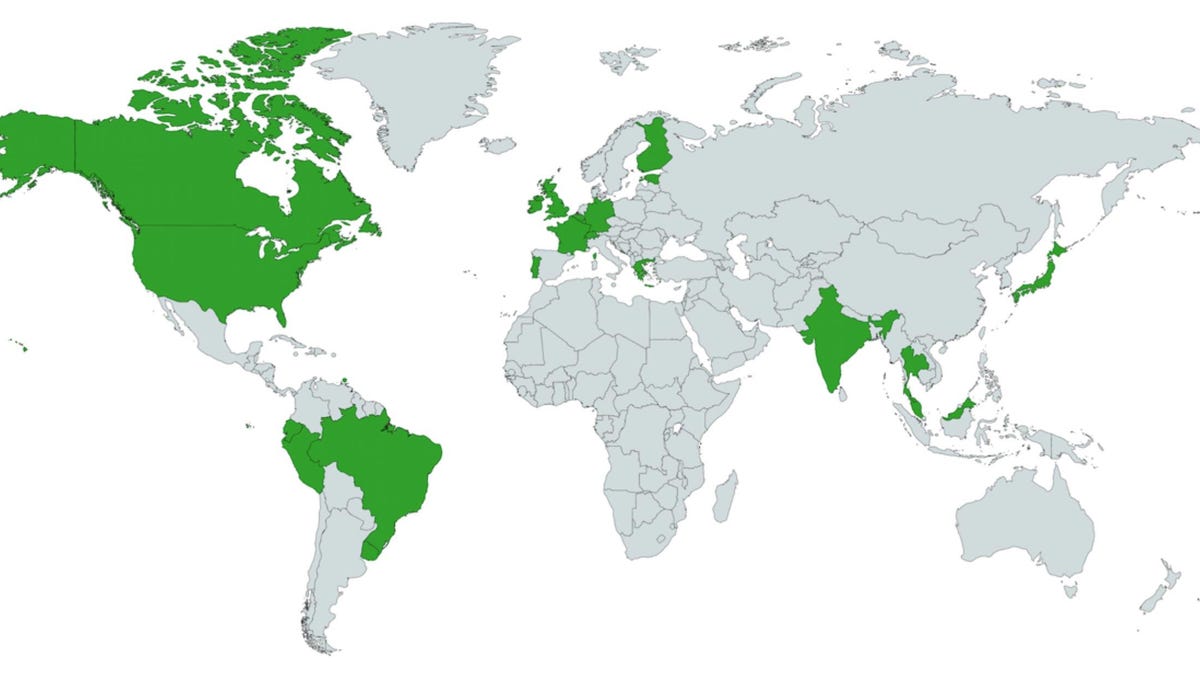Our spacious next-gen internet is finally catching on as IPv6 spreads
Cyberspace is getting more elbow room.

Countries in green use IPv6 network connections more than 15 percent of the time, according to the Internet Society's 2018 report on the transition from the older IPv4 technology.
Things are looking up for our next-generation internet.
Two decades ago, engineers created technology called IPv6 -- Internet Protocol version 6. It solved a major shortcoming of its predecessor, IPv4: a limiting of the number of devices that could be connected to the internet to a mere 4.3 billion. But even though you've been able to get your computer an IPv6 address since 1999, few bothered. It was too much hassle and expense for too little benefit.
But the shortage of IPv4 elbow room became a steadily worsening issue -- have you noticed all those phones that can connect to the network now, for example? So tech companies banded together to try to advance IPv6. The result: World IPv6 Day on June 8, 2011, when tech giants like Google, Facebook and Yahoo tested IPv6 sites to find any problems. For a sequel, they restarted those IPv6 connections and left them on starting on World IPv6 Launch Day, June 6, 2012.
Back then, there was still a risk that IPv6 wouldn't attract a critical mass of usage even with the tech biggies on board. The result would've been an internet complicated by multilayer trickery called network address translation, or NAT, that let multiple devices share the same IP address. But statistics released Wednesday by one IPv6 organizer, the Internet Society, show that IPv6 is growing steadily in usage, with about a quarter of us now using it worldwide. It looks like we're finally moving into a future that's been within our grasp since the Clinton administration.
"While there is obviously more to be done -- like roll out IPv6 to the other 75 percent of the Internet -- it's becoming clear that IPv6 is here to stay and is well-positioned to support the Internet's growth for the next several decades," said Lorenzo Colitti, a Google software engineer who's worked on IPv6 for years.
That's starting to help devices use networks without those NAT obstructions and middlemen.
"We're starting to see the benefits in terms of restored end-to-end connectivity," Colitti said. "For example, Android apps on Chrome OS have end-to-end IPv6 connectivity without NAT, thanks to a dedicated IPv6 address, which is something that isn't possible using IPv4."
How much room does IPv6 have? Enough to give network addresses to 340 undecillion devices -- that's two to the 128th power, or 340,282,366,920,938,463,463,374,607,431,768,211,456 if you're keeping score.
Fight the Power: Take a look at who's transforming the way we think about energy.
'Hello, humans': Google's Duplex could make Assistant the most lifelike AI yet.

